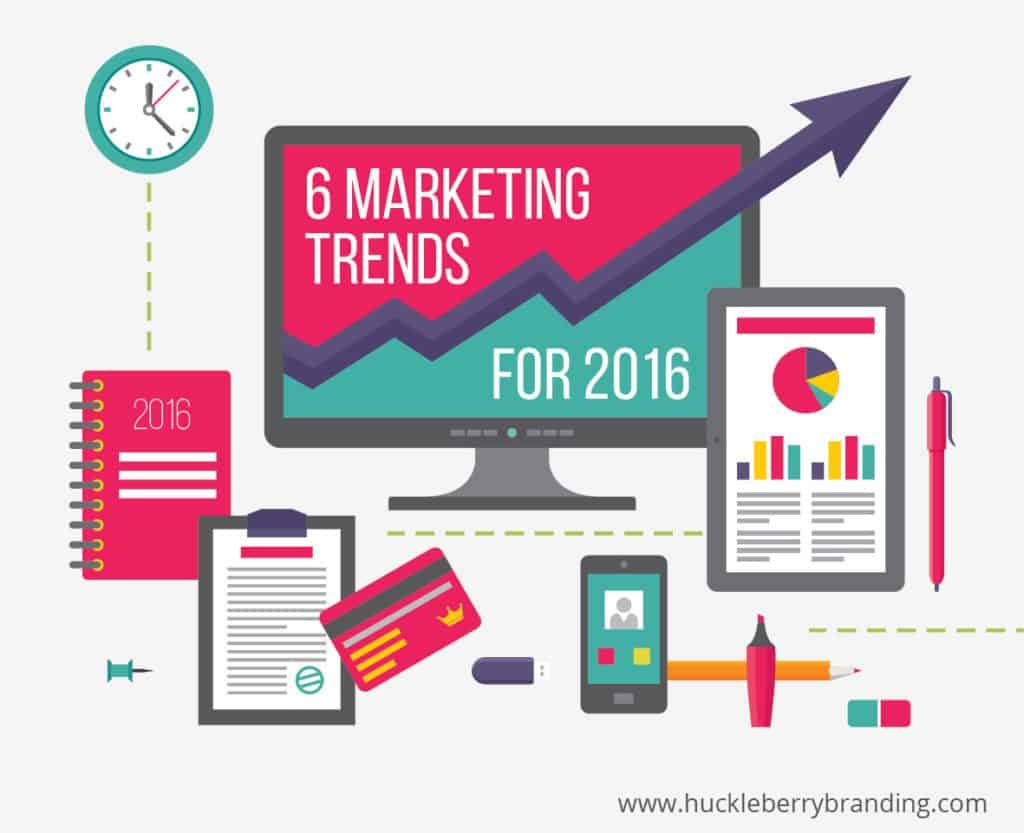It’s no surprise that the importance of digital marketing continues to climb. As technology and digital tools evolve, make sure your marketing plan accounts for these marketing trends in 2016:
1. Digital Marketing Will Surpass Traditional
As more and more people opt for tablets, smartphones and computers to get their information, traditional marketing platforms continue to lose impact. Many businesses are shifting marketing funds away from print and TV advertising and other traditional mediums to digital strategies including search engine optimization and social media to get more bang for their buck. In 2015, more than 75% of businesses planned to increase budgets for digital marketing. 2016 is expected to see even more money allocated to virtual efforts.
2. Mobile Will Be Even More Important
In 2015, multiple studies found more than half of all online traffic came from mobile devices. As the number of smartphone users continues to rise and apps and browsers become increasingly user-friendly, the amount of mobile-driven traffic will continue to soar. Last year Google and Bing added mobile-friendliness as factors in their SEO algorithms as well, penalizing websites that are not mobile friendly in search rankings. As mobile becomes even more critical in obtaining customers through SEO and preferred platforms, businesses are expected to increase budgets for mobile ads and mobile-friendly content and sites. In a study conducted by eMarketer, over 2/3 of marketers said they expect their businesses to be more mobile by 2018.
3. Time is Money
As more content competes for users’ attention, brevity is key. Ads that are less than 30 seconds in length are generally favored by viewers. Personalized ads also focus on users’ unique needs and interests to better engage your target audience.
4. Meet Your Clients Where They Are
If targeting millennials and other tech-savvy users, know that the “build it and they will come” business model no longer applies. No one can use your business or product if they don’t know it exists. Digital ads, specifically personalized ads, on popular platforms like Facebook, YouTube, Snapchat, and Twitter meet users where they are. While paid ads can be highly effective, it is also important to engage with your audience organically through social media. This keeps past clients regularly engaged, helps to reach new users, and functions as an important tool in branding, advertising, promotion, SEO and more. An added bonus is that most social media platforms are entirely free to use.
5. Content Continues to be King
Engaging, authoritative, sharable content continues to dominate as a critical part of digital marketing. Posts should be short enough to keep your customers’ attention, but long enough for search engines to read the content. Use effective keywords, and make use of meta-tags, descriptions, and find relevant inlinks to feed more users to your site. The best content will engage and grow your online audience.
6. The Only Thing Constant is Change
Apps, devices, platforms, and the ways in which users interact digitally changes by the day. While you should certainly have a solid digital marketing plan in place, also allow for some flexibility in budget and details. Having an adaptable plan prepares your business for all that you can predict and much that you cannot. By accommodating change, your business can rise to new challenges and get ahead of competition.



